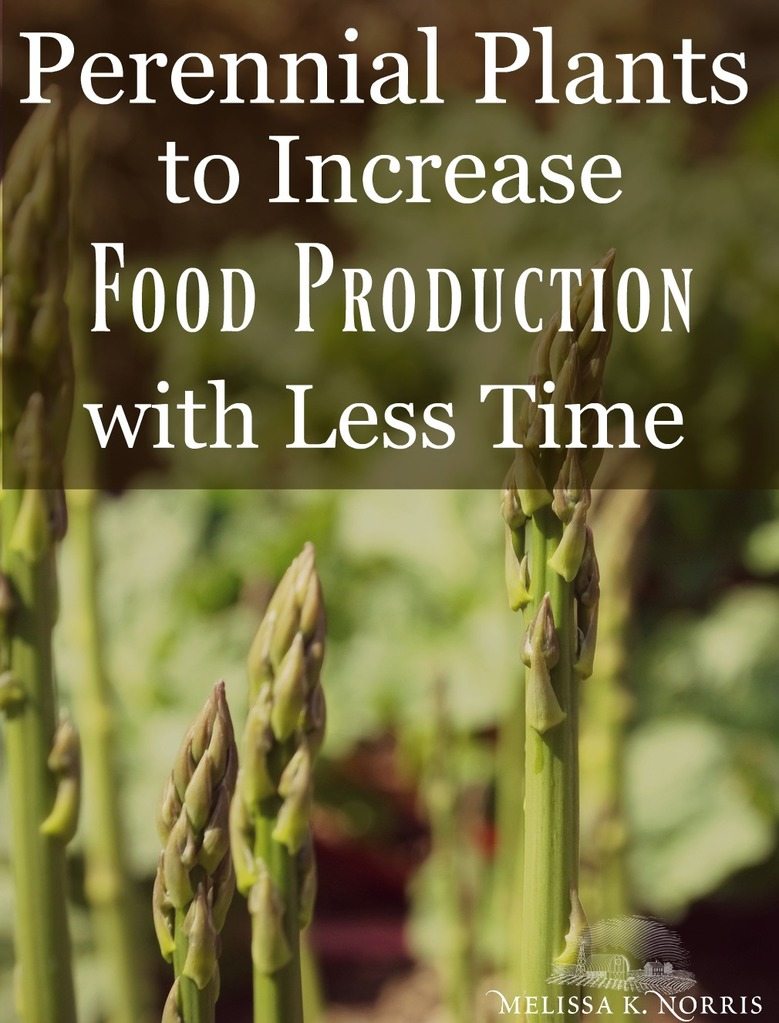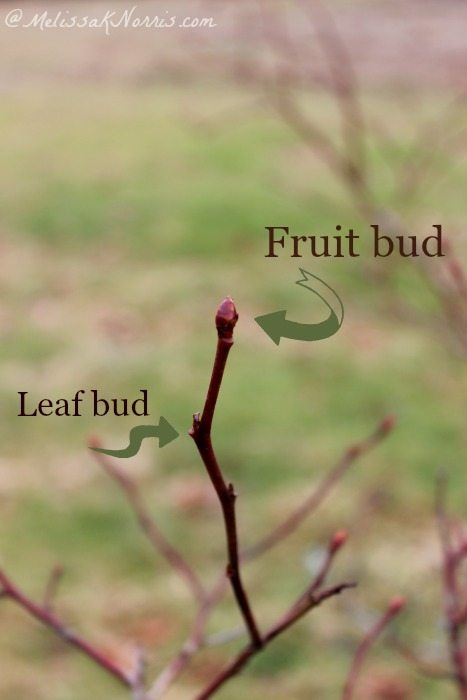Perennial plants can be the secret weapon to increase food production on your homestead with less hands on time. Best part, you can easily sneak them into your landscaping and yard to get a great return and yield of food without nearly the work you’ll put into an annual vegetable garden.
But, to get the maximum yield from your plants, you’ll want to make sure you’re following the tips below. Because, after all, who doesn’t want more home grown goodies with less work?

Listen Below to Episode #132 Perennial Plants to Increase Food Production with Less Hands On Time of the Pioneering Today Podcast, where we teach families how to grow, preserve and cook their own food using old-fashioned skill sets and wisdom to create a natural self-sufficient home, with, or without, the homestead.
Today’s episode is brought to you by The Made-from-Scratch Life: Simple Ways to Create a Natural Home, (and if you already have the book and haven’t snagged your bonuses go here to get them!). The chart alone in the Grow Chapter with our Seed Starting and Planting Chart is worth it, check out everything included here.
Everyone wants to increase food production with less hands on time. If you haven’t yet started a garden, you will want to check out Time-Saving Tips For New Gardens. In this podcast, we are specifically covering plant options for the garden and landscape.
There’s three main categories we put a plant into based on its life cycle.
- Annual plant definition– this means the plant grows from a seed, produces its fruit, goes to seed, and dies all in one season or year. Most of your summer vegetable crops are annuals like corn, beans, summer and winter squash, and lettuce, just to name a few.
- Biennial plant defintion– this is a plant that grows and the first year produces leaves, but it doesn’t bloom and produce seeds until the second year. The second year you’ll get seeds, the plants way of reproducing, and then the plant dies. This is true of foxglove (not an edible plant) but also the garden. Some examples of this are carrots, celery, garlic, onion, and most of the brassica family (cabbage, brussel sprout, broccoli, etc). Many biennial vegetables we eat from on the first year and don’t seed save from, and therefore most people treat is as annual.
- Perennial plant definition– these are plants that you plant once (and provided disease or some other malady doesn’t befall them) they will live and keep producing flowers (which in some trees and shrubs will produce edible fruit) year after year, some living decades or longer when cared for properly. There are some vegetables that are perennials, the most common are asparagus, artichokes, rhubarb, and many of your herbs like lavender, mint, oregano and thyme.
Depending upon your climate and growing season, some people can’t grow a plant as a perennial (even though technically the plant is) and will treat it as an annual in order to still get that crop.
Most people take the approach of having all three varieties when it comes to their food production.
Perennials are a great addition to your landscaping and your food crops because they don’t generally require near the amount of work your annual and biennial counterparts do. Generally speaking, winter and early spring are the time many perennials will be planted.
Learn from this post how to grow fruit trees on your property.
Best time of year to plant perennials
This is the time most of your fruit trees, bushes, and plants (especially bare root options) will be planted. Depending upon your weather, when you can work the soil (not frozen solid) but before everything is completely out of dormancy.
Most local nurseries will begin stocking the varieties when it’s suitable to plant them in your area.
Tips for planting perennials
When planting your perennial, make sure there’s enough space surrounding it for years to come. Ever year it will get bigger and you don’t want to have to move your fruit tree in a few years because you planted it to close to something else. It’s doable, but you’ll stunt the grown and fruit production every time you move it, making you wait even longer for a harvest.
Perennials are permanent, or should be in most cases. Take your time in deciding where to plant them. Especially with things like herbs or strawberries that spread via runners. They can be hard to contain if you don’t want them spilling out into other areas. Consider if a container or raised bed is a better option.
If you don’t have a yard or area you can plant in the ground, don’t think you can’t grow perennials, my apartment homesteaders, I’m talking to you. Small and compact varieties of fruit trees and bushes are excellent candidates for larger containers.
Pros and Cons of Buying Young Perennial Trees and Bushes
Pros– younger perennial plants and bushes are usually cheaper than more mature varieties, which means you don’t have to pay as much.
The root systems are smaller so you can dig the hole needed to plant by hand fairly easily.
Cons– you have to wait longer to get a good harvest. With blueberry bushes, you may see blossoms (this is what turns into your berries) in the first or second year. But it’s best to pinch off these blossoms so the plants energy can go to creating a strong root system. This will pay off in the long room giving you a healthier plant with years of larger harvests, than the tiny amount of berries you’d get that first year.
You might not realize how large the plant will get and plant it in too small of area to begin with.

If you know you’re not on your homestead yet, but will be in a few years, I’d start with a few young blueberry plants or even semi-dwarf fruit trees in a large pots.
How to Care for Perennials for Years of Food
Before perennials come out of dormancy for the year (usually late winter/early spring) you want to take care of any pruning. Almost all fruit producing trees and bushes should be pruned.
Here’s How to Prune and Trellis Raspberries
Here’s How to Prune Blueberries for a Larger Harvest
To prune fruit trees you’ll want to:
- remove any diseased or damaged branches
- remove any branches growing straight down (with the weight of foliage and fruit, gravity will cause these to break off)
- take out any branches that are growing back into the center of the tree or crossing over one another (if they rub together they’ll remove the bark and open the tree up to disease and pests)
- make cuts to encourage fruit bud growth
- remove too many branches off the top and center for air circulation and getting sunlight to the fruit in the center and lower canopy of the tree
Fertilize care for perennials
Because perennials are always in the same soil you’ll want to provide fertilizer or compost in the spring when they begin to use energy to produce leaves and fruit.
For my container plants I use this fish fertilizer every 2 to 3 weeks
For blueberries and raspberries I apply compost, fertilizer, and mulch once a year the same day I prune.
A great way to help deliver nutrients to the soil and your perennials is to use permaculture gardening (which perennial plants are a huge part of permaculture food production) and you can check out our Permaculture Garden- Beginners Guide here
Want more help on raising and growing herbs for both culinary and medicinal use?
Get your chart on when to start and plant your annual herbs, plus our detailed chart on herbs with both their culinary use and their medicinal use.
Because some herbs should not be used in our food, where others are dual purpose herbs. Use this easy chart found in Hand Made: the Modern Guide to Made-from-Scratch Living, including all of the other bonuses, charts, and resources here to help you.



